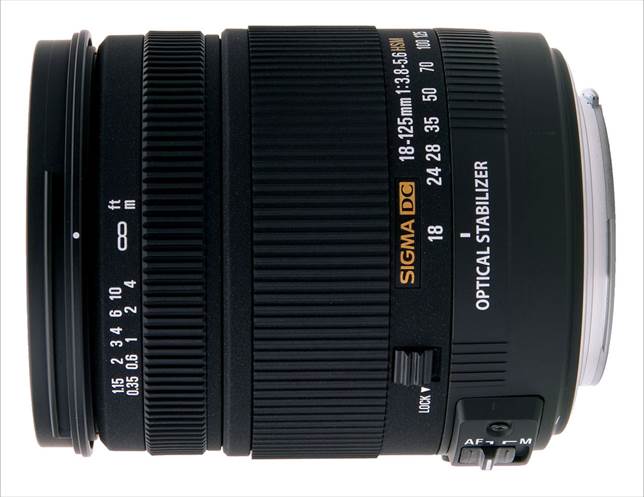2014 Superzoom Lenses Group Test (Part 2)
What to consider when choosing a superzoom lens
The starting point for choosing any type of lens is what
camera body you use, and it’s especially true for superzooms. There are two
main types of Canon D-SLR, those like the 5D (in all of its three incarnations)
which have full-frame sensors, and those like the 650D, 60D and 7D that have
APS-C (Advanced Photo System-Classic) sensors.
Cameras with APS-C sensors have a crop factor of 1.6x,
effectively extending the focal range. So while you can use a lens designed for
a full-frame camera on these bodies, a superzoom like Canon’s EF 28-135mm will
have an effective zoom range of 45-216mm, giving you practically no potential
for wide-angle shooting. Putting a lens that’s designed for APS-C cameras on a
full-frame body is even less of an option, as they’re basically incompatible.

A picture shot
with Canon EF 28-135mm f/3.5-5.6 IS USM
It’s a sign of the dominance of APS-C cameras that there are
now only two sensibly priced superzooms available for full-frame bodies:
Canon’s EF 28-135mm f/3.5-5.6 IS USM and Tamron’s 28-300mm f/3.5-6.3 XR Di VC.
They’re comparatively old designs, but we’re featuring both here. We’re not
including the Canon EF 28-300mm, as it’s at 1.7kg, which is too heavy for a
‘walkabout’ lens.
The competition is a lot fiercer when it comes to superzooms
for APS-C bodies, with plenty of factors to consider, starting with the
outright zoom range. All of the featured superzooms for APS-C cameras have a wide-angle
potential of 18mm, equivalent to 29mm taking the crop factor into account.
Telephoto reach is a different story. The Sigma 18-125mm and Canon 18-135mm
offer the least zoom range, with effective telephoto lengths of 200mm and 216mm
respectively. At the other end of the scale, the Sigma 18-250mm and Tamron
18-270mm superzooms lead the long-distance stakes with effective telephoto
lengths of 400mm and 480mm.
Canon EF 28-135mm f/3.5-5.6 IS USM
The meagre 4.8x zoom range barely qualifies this lens as a
superzoom, but if you have a full-frame camera, you can’t betoo choosy. Mount
the lens on an APS-C body and you get aneffective zoom range of 45-216mm,
losing any wide-angle potential but gaining useful telephoto reach.

Canon EF 28-135mm
f/3.5-5.6 IS USM
In terms of build quality, this lens feels more upmarket
than the other two Canon lenses on test. The ring-type USM autofocus is fast
and practically silent, with the bonus that the focus ring doesn’t rotate
during autofocus, while still being available for full-time manual override. In
other respects, the design is a bit long in the tooth. The 28-135mm is over 14
years old and was Canon’s first ‘standard’ zoom to feature an Image Stabilizer;
it’s an old generation that lacks a panning mode and only has a claimed three-stop
effectiveness. In our tests, it only really managed a two-stop benefit.
Image quality is very good in all respects, with impressive
sharpness and minimal distortions, vignetting or chromatic aberrations.
|
Verdict
·
Price: $480
·
For: Very good image quality and solid build quality at a
reasonable price
·
Against: Zoom range is the poorest in the group, and the Image
Stabilizer is the least effective
|
Sigma 18-125mm f/3.8-5.6 DC OS HSM
The joint cheapest lens in the group, this Sigma also has
the most disappointing zoom range of any APS-C format lens, equivalent to
29-200mm. Nevertheless, build quality feels robust and there are some upmarket
features including a four- stop Optical Stabilizer, plus HSM (Hypersonic Motor)
autofocus. It’s a motor-based system rather than Sigma’s more advanced
ring-type HSM, so the focus ring rotates during autofocus, and it’s only
slightly quicker and quieter than the micro-motors fitted to the Canon EF-S
18-135mm and 18-200mm lenses.

Sigma 18-125mm
f/3.8-5.6 DC OS HSM
There’s no hint of zoom creep, which makes for easy use with
a tripod. A bigger advantage is that, with its relatively small zoom range,
distortions are particularly well controlled. The Sigma also performs very well
in terms of sharpness and contrast, and it does a good job of keeping
vignetting and chromatic aberrations at bay.
Ultimately, if you don’t need to push telephoto reach beyond
an effective 200mm focal length, this Sigma offers an excellent combination of
image quality and solid build at an unbeatable price.
|
Verdict
·
Price: $360
·
For: Excellent value considering its high standardof build and
image quality
·
Against: Telephoto reach is lacking compared with most lenses
in the group
|